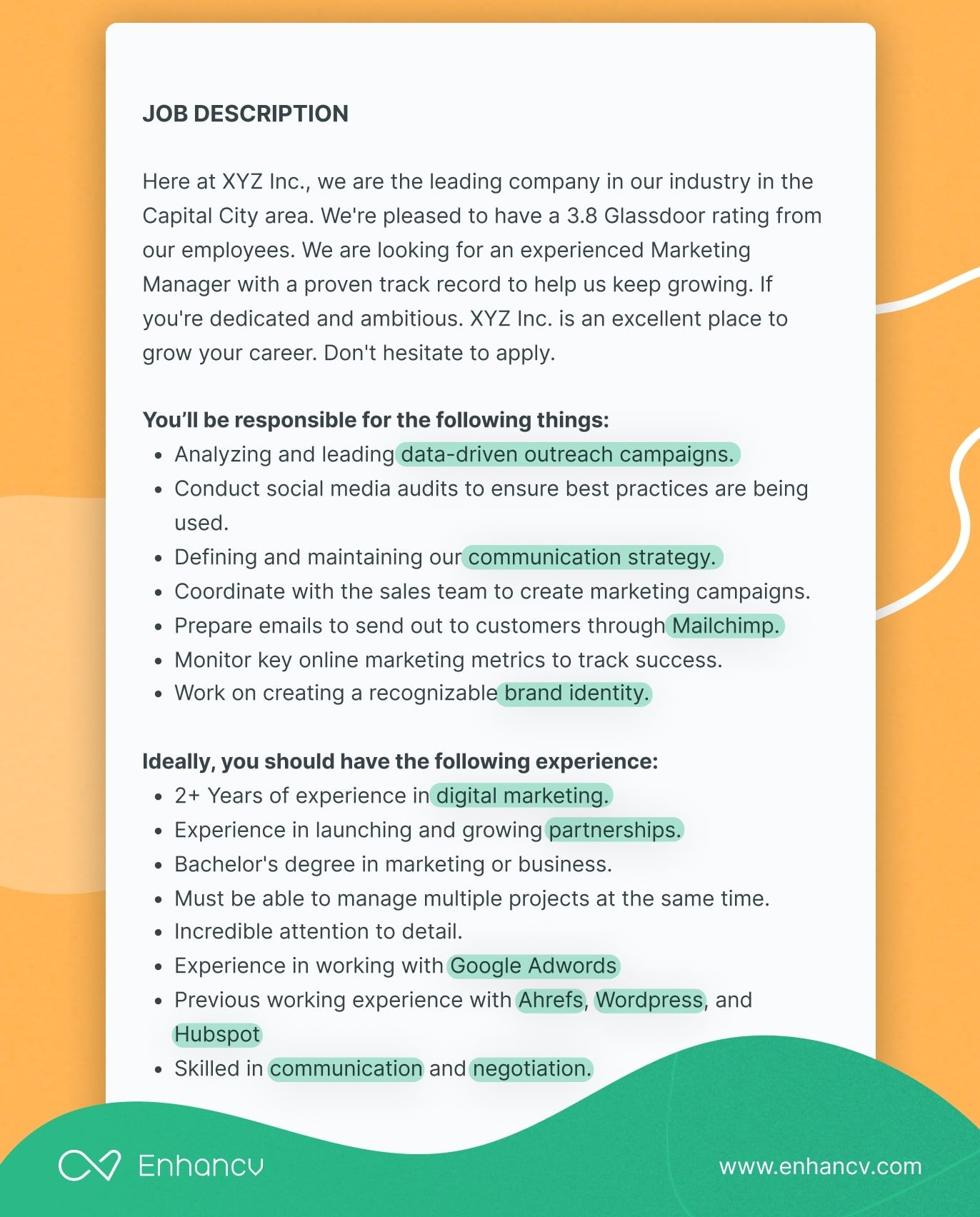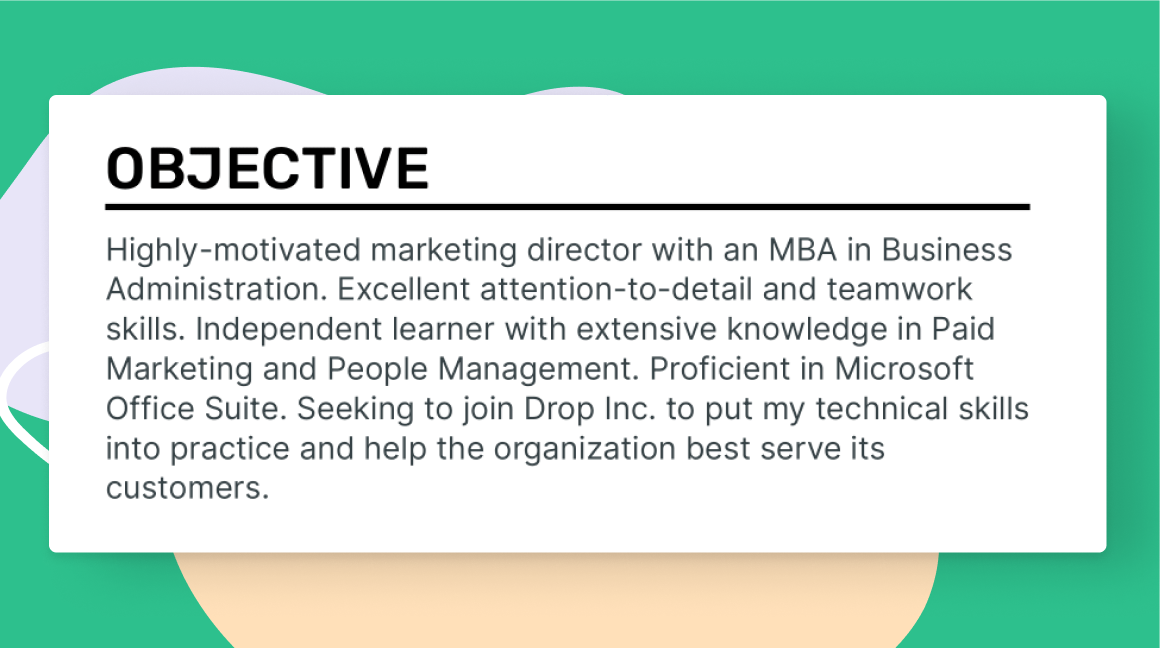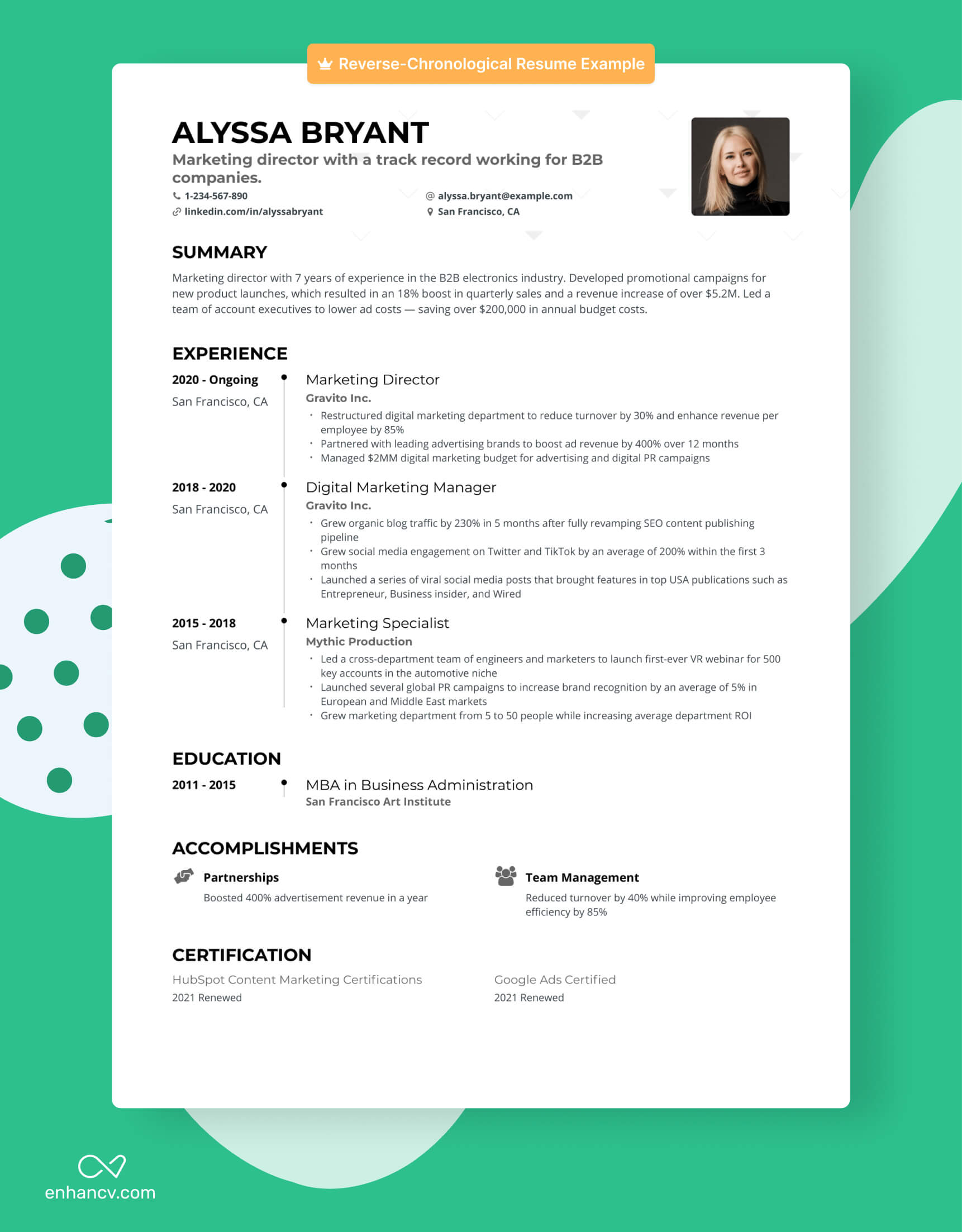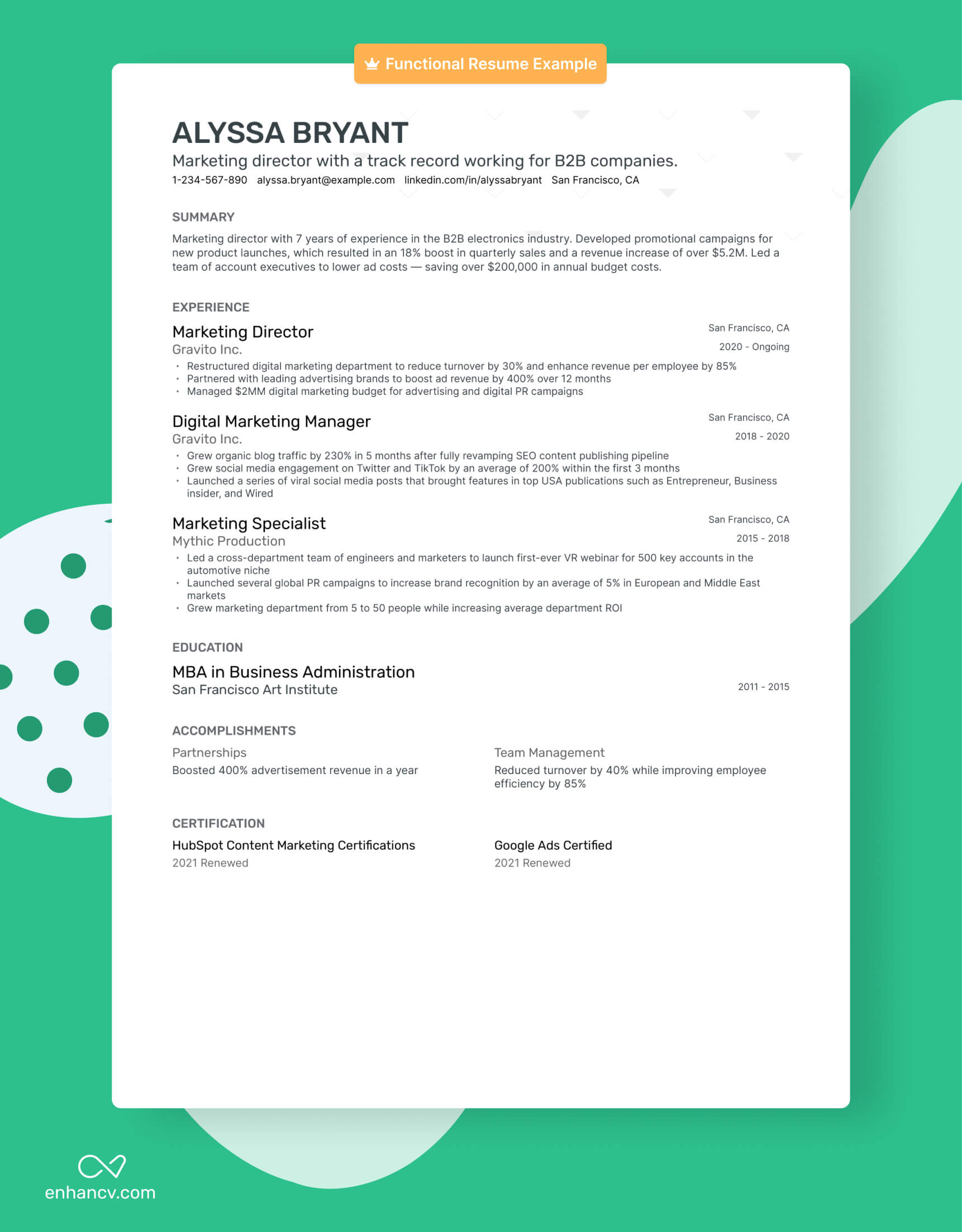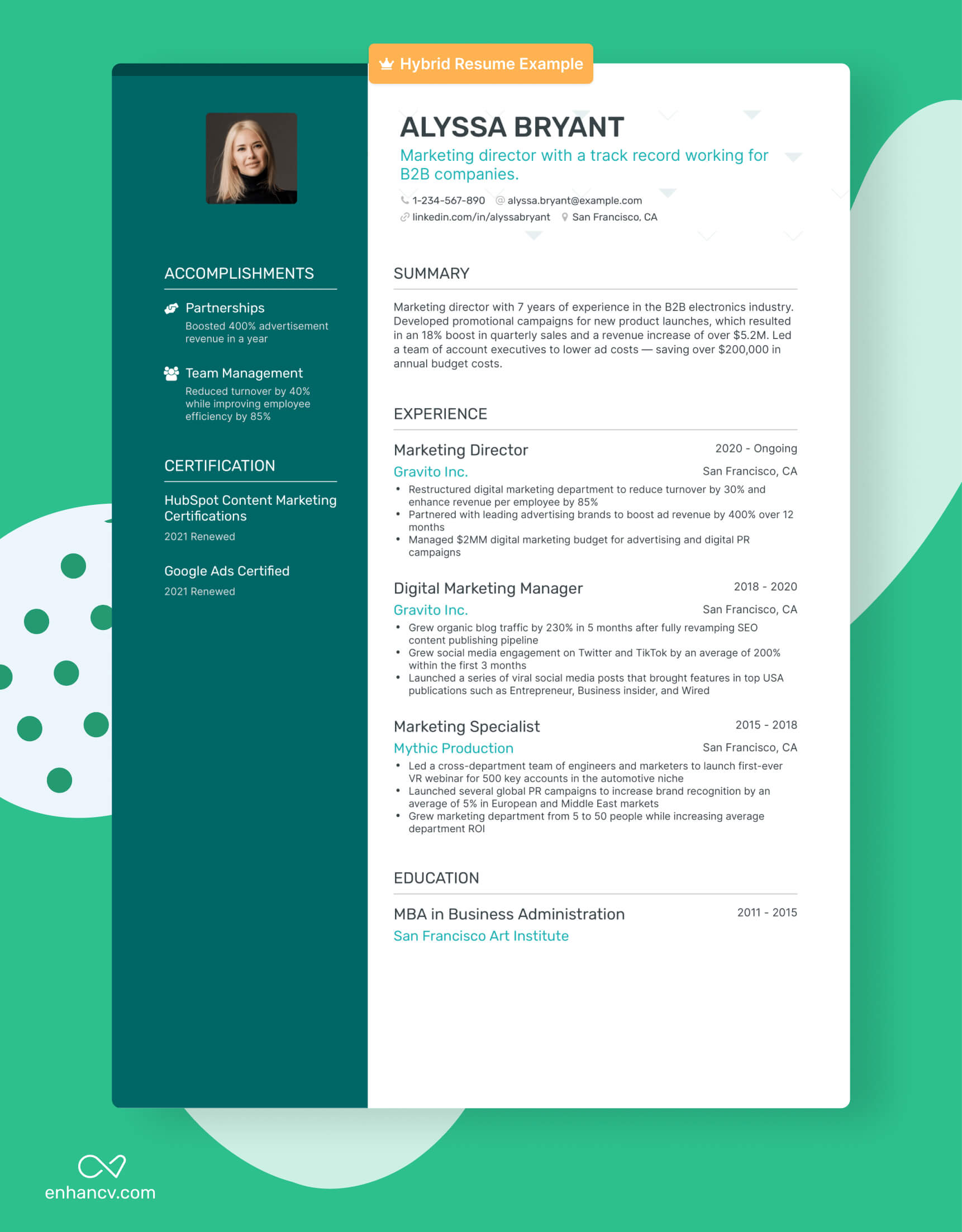What's the quickest way to get ignored in your job hunt?
Treat the top of your resume as an unimportant part and start it off as weak and boring.
The first section of your resume is critical because it affects how recruiters will view you as a candidate. A resume that starts off strong will get more headhunters interested. That in turn will help you land more interviews, which results in better employment opportunities.
That's why we created this guide for you – to give you a step-by-step process for starting your resume the right way. By the end of it, you'll also get a few expert tips for taking your resume to the next level.
Let's get into it!
Scrutinize the job description carefully
Upload & Check Your Resume
Drop your resume here or choose a file. PDF & DOCX only. Max 2MB file size.
Recruiters from different companies will want to see specific details about you at the top of the page. And that all depends on the hiring company's demands in the workplace as well as their expectations.
Therefore, the first step to starting your resume the right way is to go through the job offer carefully. This will help you find out more about your duties for the new position, the skills you should have, and the qualifications required from you.
Once you understand what hiring managers want, you can tailor your resume specifically to meet their needs. As a consequence, you'll be able to grab attention within a few seconds and stand out from the competition.
The most important sections to look for in the job description are:
- About the company — to learn about the company's nature of work, its values, and its core beliefs
- Key duties and responsibilities — to find out more about the demands of the position and which candidates are most qualified to occupy it
- Qualifications — to spice up your resume with relevant strengths and credentials such as educational degrees, core skills, and certifications
The job description will also help you extract the best keywords you have to use for ATS optimization. Those are the most important terms and phrases used by the company to sort through hundreds of candidates and qualify a few finalists for an interview.
Pro tip
A lot of companies update their job offers regularly to keep up with the latest demands of their industries. New character traits, skills, technologies, and certificates may be added to job offers as required. That's why you should be updating and improving your resume on a regular basis.
Develop an authentic personal brand story
Instead of it being just words on paper, your resume is actually the marketing piece that will sell your industry skills and knowledge. A strong resume will tell your professional story authentically to take recruiters from "who is this candidate?" to "I've just found my dream employee".
This mindset shift in viewing your resume will help you regard sections as plots in your story. When all put together, each section will help market you as the perfect candidate for the headhunter.
Any recruiter will have the following questions before they decide to hire you:
- Do you fit the requirements and qualifications to occupy the job?
- What are your best skills, qualities, and personality traits?
- How do you intend to help the hiring company thrive?
- Do you have the potential to develop as an employee in the future?
- Why should the company hire you instead of everyone else?
By this point, you already know what the hiring company is looking for in their next candidate. You understand the challenges they're facing and the responsibilities they need the most help with. So answering some of those questions in the form of a coherent professional story should be easy.
The start of your resume is the most important section because that’s what keeps readers glued to the page. So you want to feature the most valuable, exciting facts about you at the very top. From there, you should capitalize on that curiosity by providing great value throughout the remaining sections.
Create an outline for your resume
Now that you've decided on all the information you want to showcase in your resume, you have to organize that into sections. You'll start doing that by creating an outline for your resume — which should include every important and relevant information in your personal brand story.
The reason why outlining your resume is crucial is that it provides you with a solid visual guide to follow. By knowing what goes where on the page, you'll save yourself a lot of unnecessary changes and unplanned restructuring.
The resume outline is also important for ensuring that your story is consistent. You won't risk forgetting any essential details about your professional career. An outline containing all the sections you need will help you break down and organize every piece of information you want to include.
While making a resume outline may look complicated, it's actually an easy process that you can do in less than five minutes. To learn more, check out our detailed guide on how to write a perfect resume outline that tells your story with confidence.
Choose a section to start your resume
Which section should you add first to your resume? And how do you know if you’re making the right decision even before you start applying?
There are a few different ways you can start your resume:
Always put the header on top of your resume
The header is the first section on the resume page — which doesn't convey any information about expertise or qualifications. Yet, it's still a fundamental part of the resume because it contains the necessary personal details that recruiters need before they make a hiring decision.
No matter the resume format or job position you're applying for, the header should always be at the top. To write an excellent resume header, you have to include the following contact information:
- Name
- Job title — needs to be specific to the position you're applying for
- Phone number — must be reachable at all times. But it should also not be your current work number as that may leave a negative impression
- Email address — has to follow a professional email format such as first.last@examples[.]com or f.last@example[.]com
- Location — doesn't have to be your full home address but instead should follow the "city, state" format
You may also add your LinkedIn profile, personal website, or portfolio link to showcase your work achievements. Although this may seem unimportant, additional details about you can make a huge difference in the shortlisting process.
Looking for a way to make your header even more captivating? Add a resume headline that promotes your value as an employee. By stating precisely — at the top — what you can bring to the table, you'll lure headhunters into reading every single word on the page.
If you're not sure about how to write a good headline, think of it as the sentence you'd say to the recruiter if you only had three seconds with them. For example, your resume headline may look something like this:
Good Example
- Detail-Oriented Project Manager With 6 Years of Experience in the Tech Industry
- Award-Winning Software Engineer Specializing in Healthcare App Development
- Senior Marketing Specialist With a Track Record of Success Working for B2B Companies
Start your resume with a summary section
The summary section is often placed above every other section but below the header. It is used like that by many job seekers because that's a common practice they've seen others do.
As the word "summary" suggests, this part of the resume is dedicated to summing up the most essential details about your career. The summary is where you'll make your elevator pitch to showcase your best achievements in 3 to 5 sentences. This is a great place to feature relevant skills, personality traits, educational background, as well as professional certificates.
Here's an example of how to craft an eye-catching summary for your resume:
Marketing director with 12 years of experience in the B2C electronics industry. Developed promotional campaigns for new product launches, which resulted in an 18% boost in quarterly sales and a revenue increase of over $5.2M. Led a team of account executives to lower ad costs — saving over 200.000$ in annual budget costs. MBA in business administration.
Keep in mind
The resume summary can be a good way to start your resume. But it can only work when applying for jobs requiring many years of expertise with specific accomplishments.
In many cases, putting the summary first can make your resume weaker and less effective in persuading recruiters. For example, candidates applying for entry-level jobs should use an objective instead to highlight their growth mindset and career goals.
Start your resume with an objective section
The objective statement focuses on who you are now, your career goals for the future, and how that aligns with the hiring company's plans. This is the section where you'll highlight your most relevant skills and character traits based on the position. Like the summary section, it should be concise and no longer than 3-5 sentences.
Before we get into who should use the objective statement, you have to understand the benefits of adding it to your resume.
So far you haven't had much success in your line of work because you're new. Therefore, you're more about unlimited potential than proven knowledge. Featuring this section will help you take attention away from your lack of expertise and make up for that with talents and strong vision.
Showing recruiters that your career objectives align with the company's vision is also a huge plus. Headhunters will always prefer to recruit candidates who are rowing in the same direction from the start.
The objective section is best fit for recent grads, entry-level job seekers, and candidates in the middle of a career transition. Basically, any resume used for applying to a job where not much experience is required should feature an objective below the header.
Here's an example of how to write a captivating objective statement:
Highly-motivated marketing director with an MBA in Business Administration. Excellent attention-to-detail and teamwork skills. Independent learner with extensive knowledge in Paid Marketing and People Management. Proficient in Microsoft Office Suite. Seeking to join Drop Inc. to put my technical skills into practice and help the organization best serve its customers.
3 tips for starting your resume the right way
By now, you’ve learned the best possible ways to start your resume and when to use each one of them. Here are three additional tips to help you create the top section of your resume easily:
Choose an appropriate resume format
There are basically three main formats for creating your resume.
The reverse-chronological resume format
The reverse-chronological format features your work history and past achievements in chronological order. It starts from your newest/current job going back to the oldest one. It's the most popular format across all industries because of how efficient it is in proving value and impact in the workplace.
This format is most suitable for experienced professionals applying for jobs in competitive fields. It offers a great structure for highlighting achievements clearly and showcasing the companies you've worked for.
Pro tip
If you meet the experience requirements for the job, placing the experience section below the summary is your best option.
The functional resume format
The functional format prioritizes personal skills, technical abilities, and qualifications over experience. It features the candidate's best talents — below the summary or objective — instead of their employment history.
This type of format is an excellent choice for fresh grads, applicants with past employment gaps, and job seekers entering a new field with not much experience. Anyone with transferrable skills should double down on them to make a lasting impression rather than highlighting irrelevant experiences.
Pro tip
Featuring relevant skills within a context is vital when using the functional resume format. Anyone can claim to have a strong set of soft skills to capitalize on in the new job. But only those who prove it through successful projects and past achievements get shortlisted for an interview.
The hybrid resume format
A resume created with the hybrid format is a mix of the two formats discussed above. It combines the best of both structures to create a resume that tells your full story. So if you are an experienced employee who also possesses lots of skills in the field, this might be the ideal option for you.
The best part about this all is that your resume doesn't have to be two pages long or bore recruiters to death. Using an organized layout with a modern hybrid template, you can fit everything into one page and leave headhunters speechless.
Pro tip
Not sure if you should add skills first or prioritize experience? If the job description is focused on skills over experience, feature your strengths first. If it's a high-demand position requiring decades of experience, start off by going over your work accomplishments.
Use a resume builder with ready-made templates
Searching for a job is already a daunting process with a lot of complex duties to handle. From researching hiring companies to reorganizing your work history into a meaningful story, every single task can take you days to finish.
A resume-building tool will take away a lot of the uncertainty from your job search. It can save you hours of research and learning with its pre-made templates. Consequently, you won't have to go through the trouble of creating every single element on the page from scratch.
Enhancv is a drag-and-drop resume builder that helps you create job-winning resumes for any industry or position. It will ease your job hunt by offering you ready-made samples that follow the latest trends without breaking HR rules.
It also provides personalized suggestions around what to include to improve your application. With dozens of resume templates to use, you'll never have to struggle with writer's block again.
Make your resume shine with excellent design
For every resume you want to build, you must think of two things: content and design. We already went over the content part in the sections above — so now it's time to talk about resume design.
If you're using a modern resume builder, design isn't something you have to worry about. The tool will handle everything for you from hierarchy to the best colors you can use to grab attention.
However, if you're designing your own resume from scratch, here are a few tips to help you get started:
- Leave enough white space between separate sections and resume elements to rest the reader's eye. Remember to also create a margin of 0.5 to 1 inch to make your resume ATS-friendly.
- Maintain a clear hierarchy between titles, descriptions, and paragraphs for each section.
- Add a combination of two professional typefaces in different weights and font styles.
- Use modern, complementary colors to make important elements on the page stand out.
- Be consistent in your design choices to improve scanning and readability.
Bottom line
Here’s a quick summary of what you learned in today’s guide:
- The job description is a gold mine to any applicant. If you read it carefully before creating your resume, it will provide you with all the answers you need about what to include and which keywords to use.
- Develop a personal brand story in your head before putting any words on the page. Identifying your strongest selling points and demonstrating them as skills and achievements at the top is key to getting noticed.
- Turning your story into an outline allows you to organize all the information from the start and minimize edits. It's the visual guide that helps you leave out unnecessary details and not miss out on essential ones.
- The header section should always be at the very top of your resume. Despite it not showcasing any work-relevant qualities, it's crucial for informing headhunters about who you are and helping them reach out to you when necessary.
- There are many efficient ways to start your resume and get shortlisted. Depending on your expertise, industry skills, and resume format — you can put different sections at the top to get recruiters excited about hiring you.
Still struggling to create a resume that portrays you authentically? We offer career counseling services that will specifically help you nail the recruitment process and get the job of your dreams.
Make one that's truly you.




